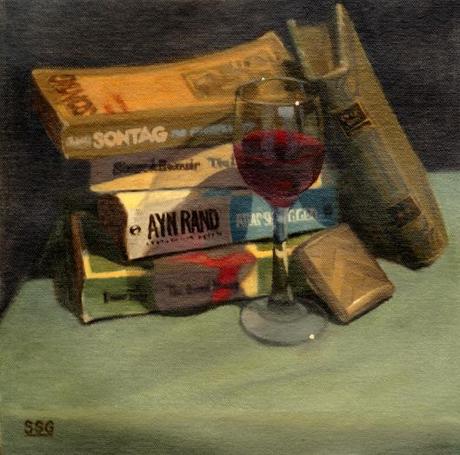
Secret history © Samantha Groenestyn
I’ve just emerged from a solid twelve-week intensive at the Atelier Art Classes in Brisbane. A re-cap: Tuesday to Thursday, 9.30am to 9.30pm; Friday till midday, Saturday 10am to 4pm; at the turn of the new year, an open Monday class as well. I’ll admit to a little Friday night painting as well. In short, my time has been thoroughly accounted for, and I’ve had little left for much else. I’m well and truly a part of the furniture.
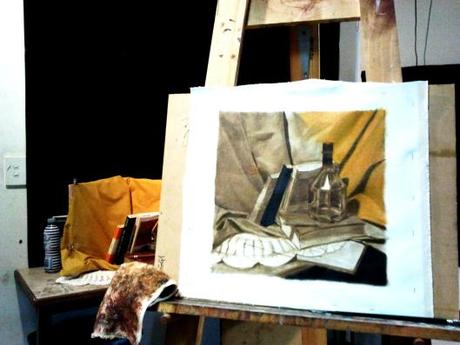
I’ve got a multitude of projects on the go. There’s a little yellow still life in the works, on the tail of this book and wine one. I’m experimenting with composition through books, smoking implements and liquor. A rough pipe and philosophy book established the process, and from there I’ve been introducing more difficult elements and puzzling out a lot of the problems on my own. I work some pencil thumbnails, trying to improve on my compositions, taking the final one to a serious tonal study. I paint up a raw umber underpainting, improving on my tonal decisions, and then block in the whole painting in colour, usually with only a light and shadow version of each colour. At this stage the painting looks somewhat complete, and the rest happens without too much pain as I push the details—introducing fall-off of light, reflections and playing with edges. I’m doing these with Ryan, who really invigorates his paintings with bold colours, and I’m enjoying the methodical approach and the vibrant results—though my own gouache work is very colourful, I feel apprehensive in bringing this sort of chroma to my oils, where my instinct is always to neutralise. I neutralise my gouache quite a lot, but the medium is so high-chroma to begin with that it’s forgiving in this way. We work under a yellow light, so I’m embracing the warmth this can introduce to a painting.
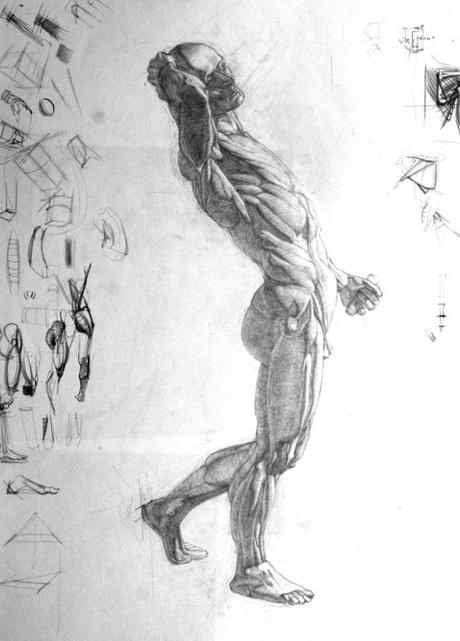
Flayed figure
Ryan is extremely interested in space in a composition, and has been giving me lots of ways of attacking composition. Much of it is intuitive—arrangements just feel right—but he’s given me a vocabulary to explain that sense. We’ve drawn webs of thirds and quarters and stars over Vermeers, and thought about the ratios of tone and what mood this can bring to a painting. We’ve played around with objects and drawn them and redrawn them and cropped them—square, wherever possible! I’m fascinated with this idea of constructing a little landscape of objects, rather than just finding a pleasing arrangement in the world. There is narrative in the construction that is a step beyond simple discovery in the natural world. I love how Nelson* (p. 12) describes it: ‘Composition is an expressive resource, not a formalist absolute.’

I’ve worked through Scott’s form drawing course, which has been eye-opening every step of the way. Scott is extremely systematic, and hands each new student a wad of notes describing his approach and the way he thinks drawing plays out in the mind. His system is built on an analogy of gears, which he introduces stage by stage, such that the student can fall back on any of the earlier, more basic gears at any time when appealing to accuracy. There is always somewhere to start—Scott is a master at providing ways to start—some ways more optimal than others, but all applicable, and, most importantly, all able to be integrated once the student is well-versed in them. Life drawing becomes a breeze with all these tools in one’s belt.
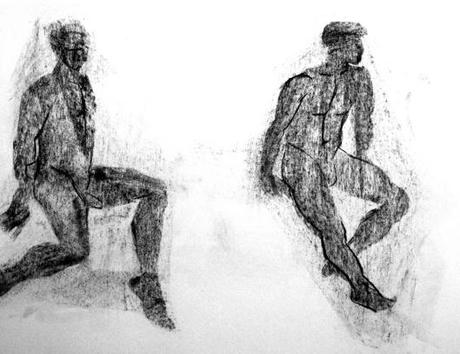
Initially we thought a lot about the angles of hips and shoulders, but gradually we were building figures with interlocking blocks, and later we were hanging these blocks off gestural lines. We’re always exploring anatomy as we explore the lines tracing into the limbs, and some days we spend entire poses concentrating on single limbs and their own gestures and counter-rhythms.
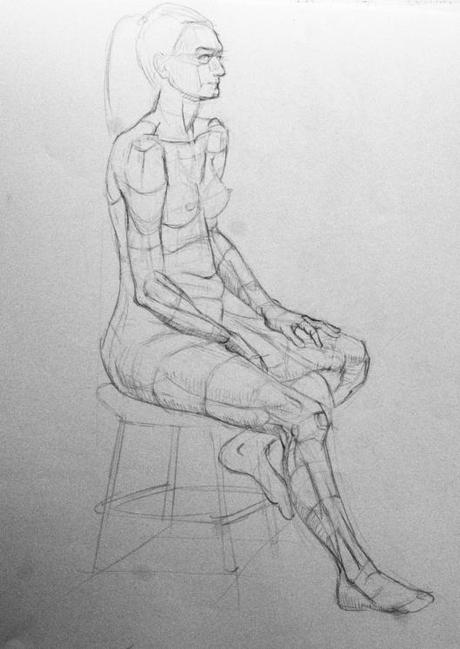
I’m going to continue with Scott’s Tuesday classes. He throws exercises at me in an effort to break my brain, and usually I’ve finished the day mentally exhausted, unable to work through the problem any further. We’ve investigated the proportions of heads from the cast and from the model, then drawn hundreds of them from imagination, encasing them in blocks, applying perspective, tilting them at all angles. We’ve drawn cylinder- and block-people, and then drawn them, thinking three-dimensionally, from the cast but imagining the cast turned ninety degrees, or one-eighty degrees. We’ve looked at planes and cross-contours, and rendered according to these planes and across the form or along it. We’ve thought spatially by carving flat silhouettes of models out of slabs of charcoal using an eraser. Probably the best thing Scott has taught me is that you can always invent a new way to get at knowledge. He’s incredibly inventive, and he spends plenty of time building the contraptions to illustrate his points and to give his students a new way in to a problem.
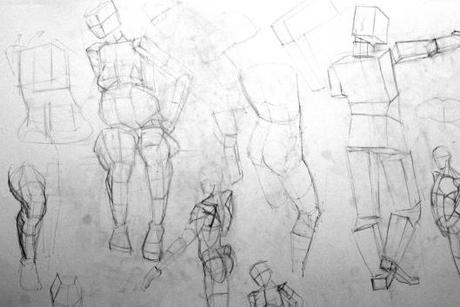
I’ve struggled with Nick’s approach, and had to acknowledge that after a year, his way of working isn’t intuitive to me. I really have to work at it to triangulate perfectly accurate outlines, and, actually, I lose interest when this is the end goal. Accuracy is undeniably important to me, but perhaps not when it interferes with the life of the drawing or painting. Nick does have an incredible library, however, and I’ve spent many an hour learning about Australian art history—Meldrum, Lambert, Vida Lahey and countless others—as well as investigating the likes of Sargent and Rembrandt and Whistler. Nick is thrilled with history, and many of his books have a history of their own which he seeks out like a detective. I was a complete new-comer to art history until he thrust these books on me, and I’ve absorbed a lot through his guided tour and discussion over copious pots of loose-leaf tea.
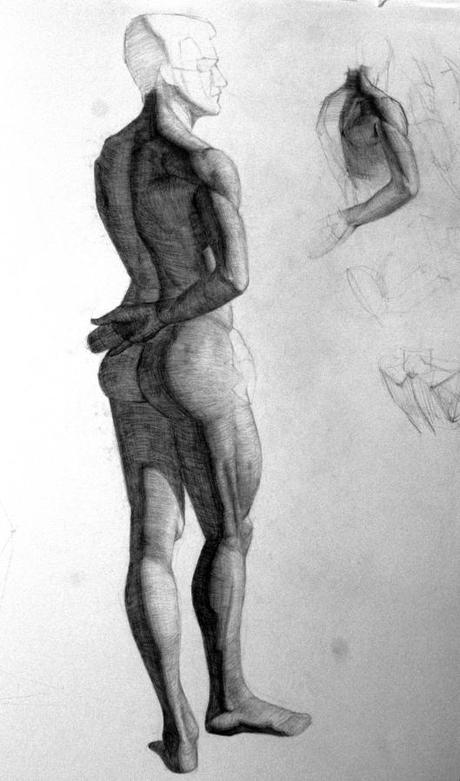
My schedule is going to look a little different now, and hopefully incorporate some more illustration time. I’ve taken a week to myself to breathe a little, to digest and do some drawing for pleasure about town. Some exciting new things are happening, and my new routine is possibly going to be my most productive and art-filled yet.

* Nelson, Robert. 2010. The Visual Language of Painting: An aesthetic analysis of representational technique. Australian Scholarly Publishing: Melbourne.
